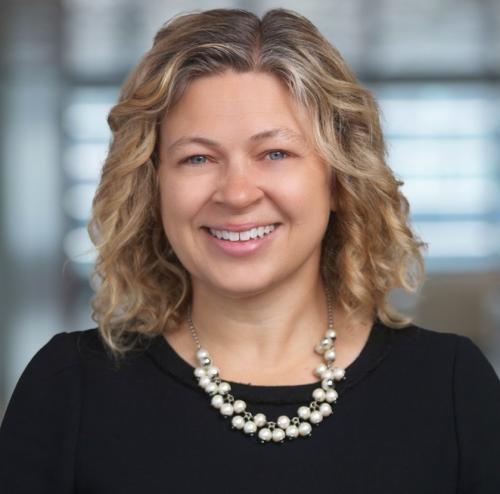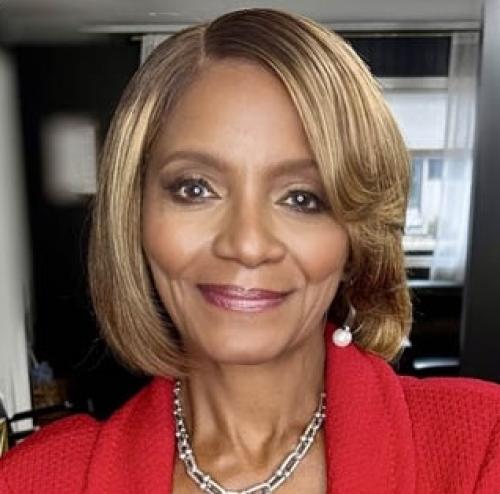A conversation with Stephen Norman, who recently retired as corporate secretary of American Express after 27 years
No one ever sets out to be a corporate secretary; it’s not exactly a profession to which young men and women fresh out of college aspire. But it can be a uniquely challenging and rewarding career path for those lucky enough to be offered the opportunity.
Earlier this year the world of corporate governance lost one of its most respected and longest-serving members: after 27 years as corporate secretary at American Express, Stephen Norman stepped down in April. Although he has officially passed leadership of the secretariat team – and much of the company’s governance activities – to Carol Schwartz, he is staying on in a supportive role until the end of September ‘to ensure a smooth transition.’
Corporate Secretary talked with Norman in his impressive downtown office, discussing a lifetime spent in governance and what he plans to do next.
CS: How did you become a corporate secretary?
SN: When I started as a corporate secretary it was certainly not the recognized position it is today, nor was it particularly the type of thing people aspired to, although I was always very interested in the role. I joined American Express as a staff lawyer in 1970 and shortly after began to work with the corporate secretary, doing a lot of the legal work with him. Before long I developed a desire to succeed him and I got my wish at the age of 39 in 1982.
CS: What made the position so appealing to you?
SN: There is the concept of a triangle when it comes to governance: one side is management, one is the board and the third is the shareholders, and each of those has powers and responsibilities. The corporate secretary is probably the only position in a company that sits in the middle of that triangle, interpreting and translating for each side. We have to submit items for shareholder approval and board approval, and also interact closely with management.
With this role came full access to the board and board meetings, which is one of the most interesting aspects of the job: being able to watch the board tackle issues in good times and bad, and to organize the material it sees and then minute what it does with that material.
CS: Do you think your experience servicing the board would make you a good director?
SN: Yes and no. There are two dimensions to what makes a desirable director: financial or business expertise and governance expertise, and I am probably stronger in the latter. Some companies that are in a reorganization mode, like some of those that are struggling with bankruptcy or restructuring, might well need more of a governance-equipped director to sort things out and institute the proper controls, checks and balances, and information flows. Others may seek more entrepreneurial types.
The problem with a corporate secretary progressing to the board is that more often than not the board is looking for someone who has run a business. The corporate secretary undoubtedly knows a lot about governance but he or she is not necessarily a business person. The board often wants someone with marketing, technology, finance or international experience, so you may not see as many secretaries evolving into board members, although some do and are very successful.
CS: What have been the major developments in the secretariat role during your tenure?
SN: The evolution of the board and its role, the growth of shareholder activism, and back office processes. Four decades ago, the board reflected the establishment of the day – that is, 100 percent white and male. Boards were larger and had a lot more current CEOs. Things were not nearly as time-consuming as they are now. And there were far fewer committees: the NYSE did not call for audit committees, for example, until 1975.
The mix of the board now is also very different. There used to be a lot more insiders; it was kind of an honorary position. Board sizes have been coming down: according to the Spencer Stuart survey, the average now is 13 members. This works on the theory that on a board that is too big, everyone relies on everyone else to carry the ball. Twelve to 14 members is, in my opinion, about the right size for the engagement of everyone.
Committees have also proliferated – not only audit committees, but also finance committees, and then in the early 1980s with the rise of social investing we saw public responsibility committees, as well as all the standard ones like compensation and benefits, nominating. In the 1990s we started seeing the emergence of governance committees.
Diversity of boards has increased significantly. Ethnic minority and female directors are much more common now. International people are sitting on US boards, and the biggest shift is that few active CEOs have the time to serve on outside boards. This means boards are increasingly populated by retired chief executives who have the time and the background to really get involved.
On the shareholder side, there has been a huge migration from registered ownership to street-name ownership. In the late 1970s Merrill Lynch came up with this concept of the financial management account. This was so convenient because people no longer needed physical share certificates. All dividends were automatically swept up and distributed or invested in money market funds. Whenever a person wanted to sell shares they were right there in the broker’s hands, removing the need to FedEx them in time to settle. It’s at the stage now where only 2 percent of American Express’ outstanding shares are in registered form, which is an amazing shift.
Another factor in the shareholder population is the growth of activism. The Employee Retirement Income Security Act of the 1980s stated that the vote is an essential part of share ownership and must be taken seriously. Prior to that a lot of institutions didn’t vote as often as they do now. Another development in the 1990s was that mutual funds started having to disclose how they vote; we now get over 90 percent of our institutions voting, though not as many on the retail side.
There is real apathy on the part of retail investors, unfortunately, so it has been institutions that have realized the power of the vote and used it to push what they think are reforms. They do that in the form of shareholder proposals. We engage with them and, if we cannot reach a common ground – which more often than not we can – it ends up on the proxy statement and we let the electorate vote on it.
There is more and more engagement with institutions, many of which now have their own proxy committees. They hire outside advisers like RiskMetrics, and the vote has become a big deal. Certainly the biggest event of the year for a corporate secretary is the engagement surrounding matters relating to the proposals that are to be voted on.
Huge changes have taken place in the back office. Not only was it once the case that shareholders used to be certificated owners whose names we could see, but also we had to send everything out by paper. That began to change in the mid-1980s, when quarterly reports largely went away. Our argument was that shareholders didn’t really need the report. We could send them one if they wanted it, but our earnings are covered widely in the news. This may not have been the case for smaller companies that continued to send out quarterlies.
CS: How has the shareholder communication mechanism changed over the years?
SN: The biggest change here is the proxy voting and distribution capability of the market, largely led by Broadridge. At first many of us were nervous about non-registered ownership because we lost the ability to know who our shareholders were. We could no longer communicate with them directly.
That ceased to be a concern when we found we did have direct contact with all of our institutional holders. Section 13 requires that all funds owning $100 million in assets list their holdings. As that constitutes some 80 percent of our owners, we know who to call in most cases. If you want to engage on an issue, that’s the place to spend time. One third of our retail holders own fewer than 100 shares and, frankly, it is not efficient to spend five minutes on the phone with someone who owns 25 shares debating the merits of a proposal, so we didn’t care so much about not knowing the names of our retail investors.
In the late 1980s it came to light that not all brokers were good at distributing materials. It was very inefficient and expensive for brokers to do all this stuffing and mailing so they started farming it out to ADP (now Broadridge), which proved far more efficient – as did DTCC, a single-source provider of paperless stock ownership, and Broadridge’s increasing use of the internet.
We have saved a ton of money through the elimination of hard-copy proxy materials. We have approximately 660,000 shareholders, and all but 200,000 are getting electronic distribution. It is cheaper, faster and greener.
CS: With the corporate secretary role becoming more visible, did you find the progression hard?
SN: I got my training in speaking before legislative bodies. When you stand before a state legislature to talk about credit card legislation, for example, you have to be prepared and summarize your arguments in a lucid way. I used this to develop my skills for speaking with activist institutions and clearly giving our reasons for supporting or opposing a notion. Outreach is a big part of any company’s shareholder relations or governance. I think a corporate secretary needs to learn those skills, learn to hand the issue over to the IR department or find someone else to speak on it. You can’t be an ostrich or you will end up with proxy vote totals that are unfavorable to management.
We very rarely have to call at the last minute during voting time to put our position. We engage the larger funds during the off-season when they have more time to talk and we can explain our position.
CS: What will you miss the most?
SN: The intellectual stimulation – I am already missing it. It is very interesting to watch the evolution of these issues, and they are deadly important. It is a privilege to be in the middle of that triangle, interpreting and mediating between the three bodies of influence.








